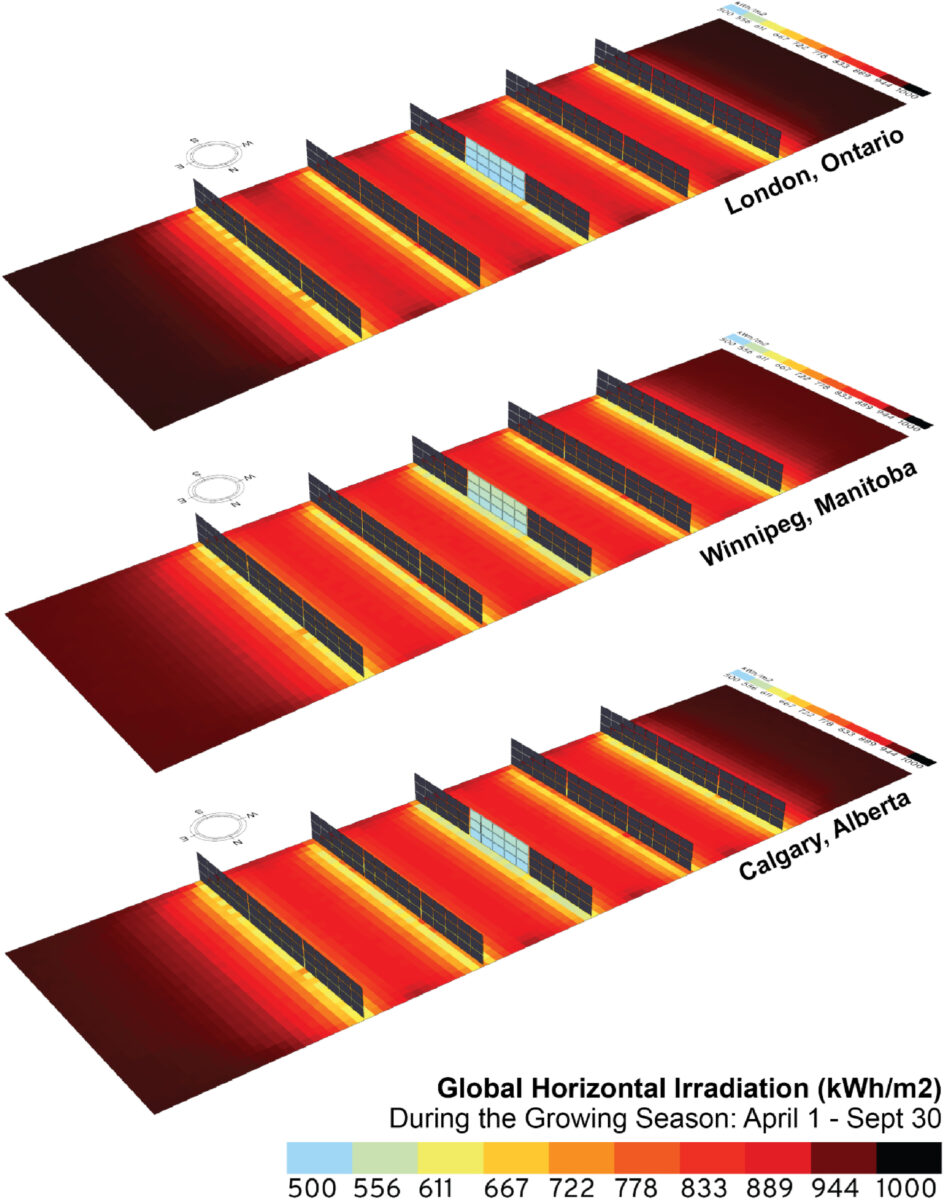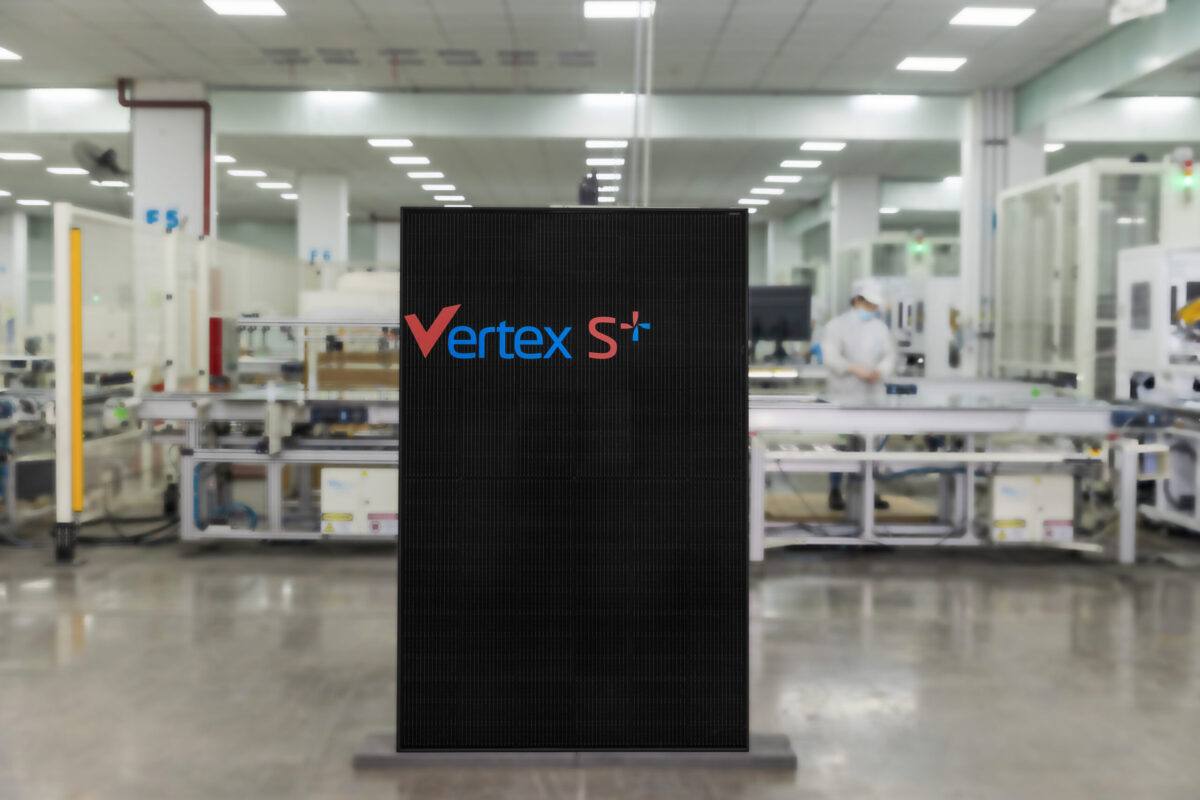A group of researchers led by the University of Western Ontario in Canada has investigated what kinds of crops may be better suited to be grown in vertical agrivoltaic facilities.
“This study explored the potential electrical energy production for PV arrays as well as the solar irradiation reaching the ground with three different spacings and three different Canadian farming locations – London, Calgary, and Winnipeg – using irradiance modeling,” corresponding author Uzair Jamil told PV magazine.
The team conducted the experiments on three vertical, bifacial, east-west oriented agrivoltaic systems with an azimuth of 90 degrees to maximize the power output. The arrays were installed 0.5 m above the ground with a height of 3.06 m. Their length was 2.05 m, and their width was 1.13 m. In the 3D model, they were sectioned into rows with three strings of 15 modules in each row section.
Climate data were created representing typical meteorological months, and the program simulated the main growing season in Canada, from April 1 to September 30. In addition to average irradiance, the cumulative radiation for each location and cumulative irradiation over the growing season were also included in the calculation.
According to the results, 45 m spacing in London left large areas unaffected by solar irradiance values, but a slight reduction was recorded within 5–6 m from the PV system. In the 15 m spacing case, within 2 meters of the panels, irradiance values were around 150–170 W/m2 and continuously increased to 210 W/m2 beyond 4 m. For 5 m spacing, the ground irradiance decreases to about 110–130 W/m2 between the rows.
In Winnipeg, the irradiance in the 5-meter case was 110 W/m2, and in Calgary, it was 110–130 W/m2. As for the 15 m spacing, irradiance reached up to 210 W/m2 in both locations. Also, in both cases, with 45 m row spacing, large areas between the panels do not experience any reduction in sunlight. As in all cases, the 45 m spacing did not affect the irradiance much.
Popular content
“The total electricity consumption in Canada in 2019 was approximately 632 TWh. The total electrical energy estimated from employing agrivoltaics only in three provinces within Canada, and that too on a handful of crops expected to perform well under agrivoltaic systems, is 532 TWh,” they concluded. “This makes up more than 84% of the total electricity requirements within Canada and suggests a substantial potential increase in renewable energy generation in the country.”
Their findings were presented in “Solar energy modeling and proposed crops for different agrivoltaics systems,” published on Energy. The team also comprised academics from Colorado State University.
This content is protected by copyright and may not be reused. If you want to cooperate with us and would like to reuse some of our content, please contact: editors@pv-magazine.com.



By submitting this form you agree to pv magazine using your data for the purposes of publishing your comment.
Your personal data will only be disclosed or otherwise transmitted to third parties for the purposes of spam filtering or if this is necessary for technical maintenance of the website. Any other transfer to third parties will not take place unless this is justified on the basis of applicable data protection regulations or if pv magazine is legally obliged to do so.
You may revoke this consent at any time with effect for the future, in which case your personal data will be deleted immediately. Otherwise, your data will be deleted if pv magazine has processed your request or the purpose of data storage is fulfilled.
Further information on data privacy can be found in our Data Protection Policy.